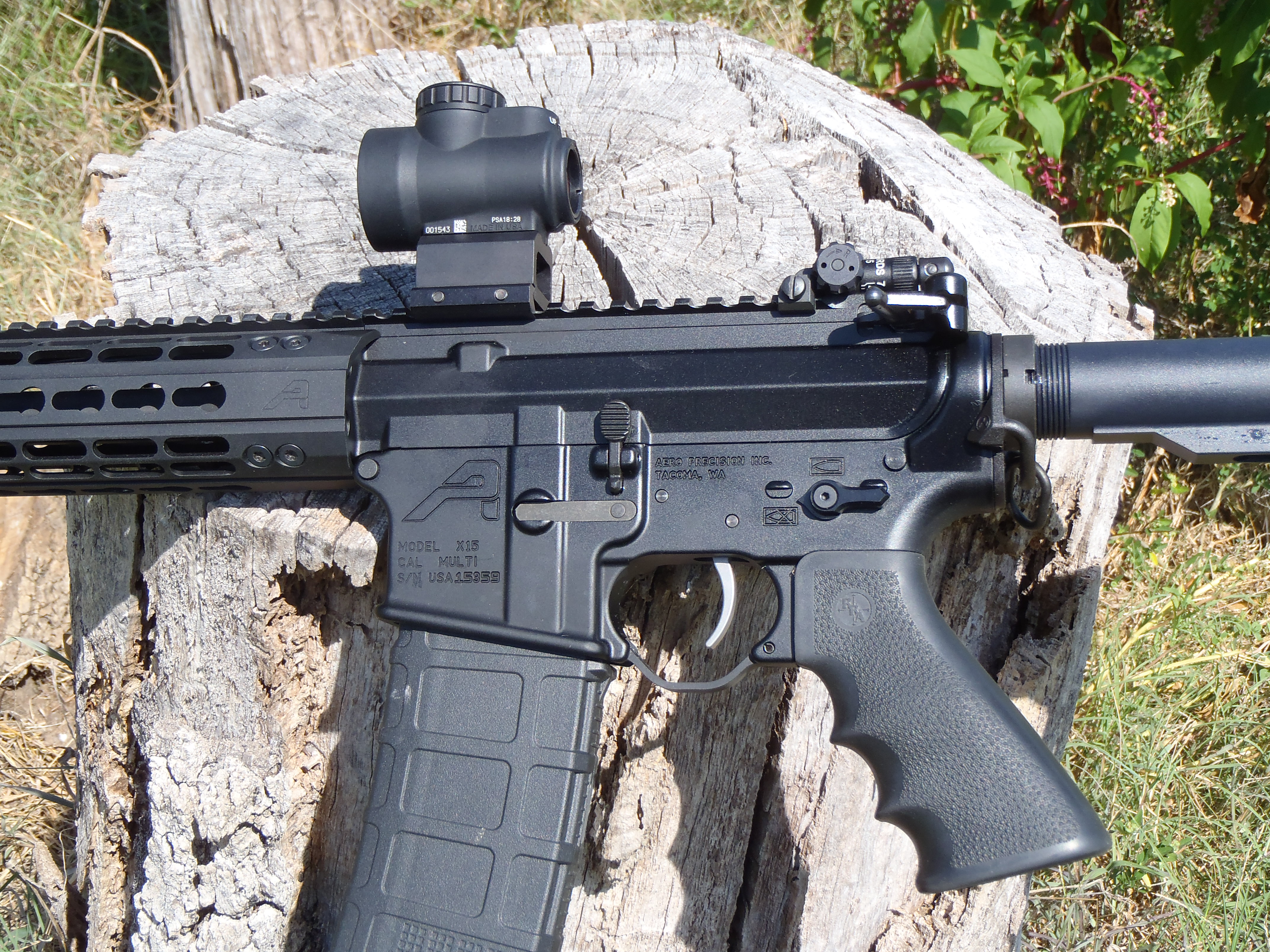Trijicon continues to release exciting new products at an incredible rate. The new Trijicon MRO (Miniature Rifle Optic) is out and Tactical Gun Review was on the list for an early test unit. As MRO rumors began to circulate the most asked question was, “How does it compare to the Aimpoint Micro?” We are big fans of the Aimpoint Micro series and have run them on a variety of weapons over the years so we had the same questions.
The first thing you notice is that the Trijicon MRO is slightly larger than the Aimpoint Micro. For practical purposes it is about the same size and weight as the Aimpoint. The obvious differences are that the MRO is certainly a bit taller than the Micro and the objective lens is larger (providing a “tapered light path” according to Trijicon).

There are several variants of the Aimpoint Micro series so I am not going to do a detailed comparison against the Trijicon. The differences in dimensions are negligible.
Ah, what about battery life? Everyone loves their Aimpoint. Turn it off? Why, “I want it always ready to rumble.” Aimpoint specs claim over five years (50,000 hours) run-time on a CR2032 lithium battery. Trijicon MRO specs five years of run-time on a CR2032 battery at day setting 3. They both have multiple settings include Night Vision (although the Micro H models are not NVD).
The Trijicon MRO features a 2.0 MOA Red Dot. Aimpoint has a choice between 2.0 MOA or 4.0 MOA. Both optics use 1/2″ MOA adjustments.

I took several through-the-scope pictures but the results are boring and worthless – a red dot superimposed on a target at 1X magnification.
Three different mounts are available – low, Full Co-Witness, and Lower 1/3rd Co-Witness. Retail for $60 each.
As you would expect, target acquisition using the Trijicon MRO is fast, really fast. Climate conditions were low-nineties, no cloud cover, and a brutally harsh Texas sun. The red dot was clearly visible on settings 5 and 6. Setting 4 was great for finer target work but not bright enough/fast enough (to me) for any sort of action competition or fight. I could not easily pick up setting 3 in the bright Texas sun. From there the settings go down appropriately for low-light conditions. I did not have the opportunity to test it with a night vision but it is compatible.

One thing I really like about the Trijicon MRO are the controls. First, the reticle adjusters are recessed, protected, and snag-free. Second, the brightness control dial is mounted on top of the scope body – as opposed to being on the side of the Aimpoint. This thoughtful feature means the MRO is ambidextrous and is easy to operate with either hand even while wearing gloves.

There is a mid-adjustment off position between the 2 and 3 so that you don’t have to spin all the way back down. This effectively separates the “day” and “night” brightness settings.
Housing is constructed of 7075-T6 aluminum with a dull, no-glare finish.

Trijicon MRO MSRP: $579 plus $60 scope mount. Depending upon the particular Aimpoint Micro model selected the Trijicon is in the same ballpark – fitting in between the Micro H-1 and more expensive T-1 and T-2 versions.
Any challenger to the Aimpoint Micro T-1 must also live up to the Aimpoint reputation for reliability in tough conditions. The Trijicon MRO is a worthy competitor.
What do you think?

Mike Coker
Latest posts by Mike Coker (see all)
- Aguila Ammunition Launches 5.56 x 45MM NATO 55 Grain Full Metal Jacket in New 30-Round Box and Battle Pack – March 29, 2025
- ONNAIS Iron Pro gun safe review – March 6, 2025
- Galco Leather Belts: A Blend of Craftsmanship, Durability, and Style – January 9, 2025

Leave a Reply